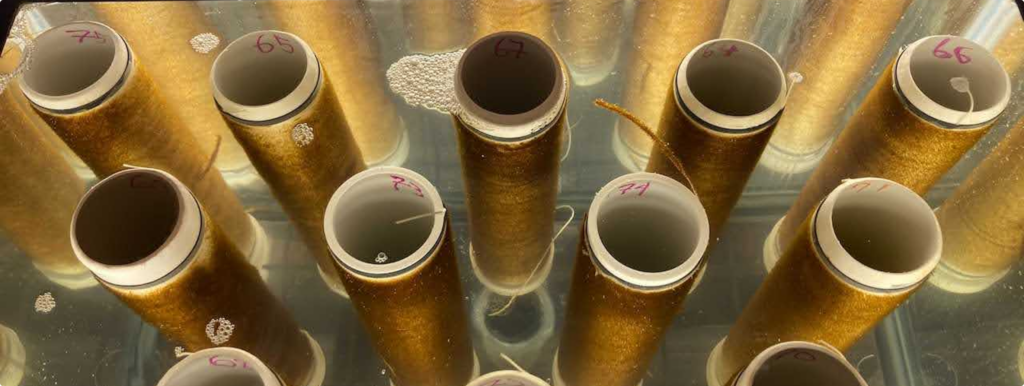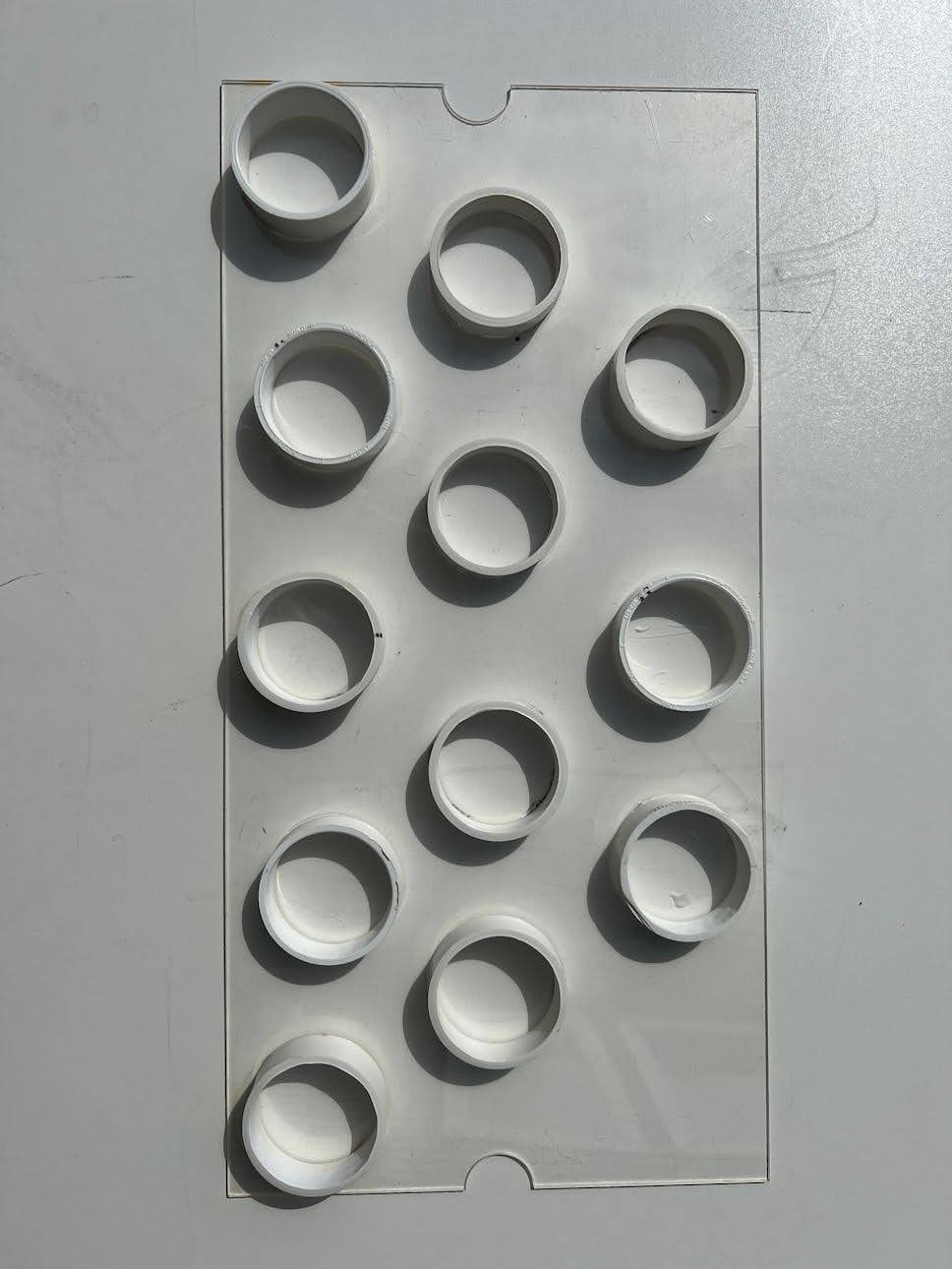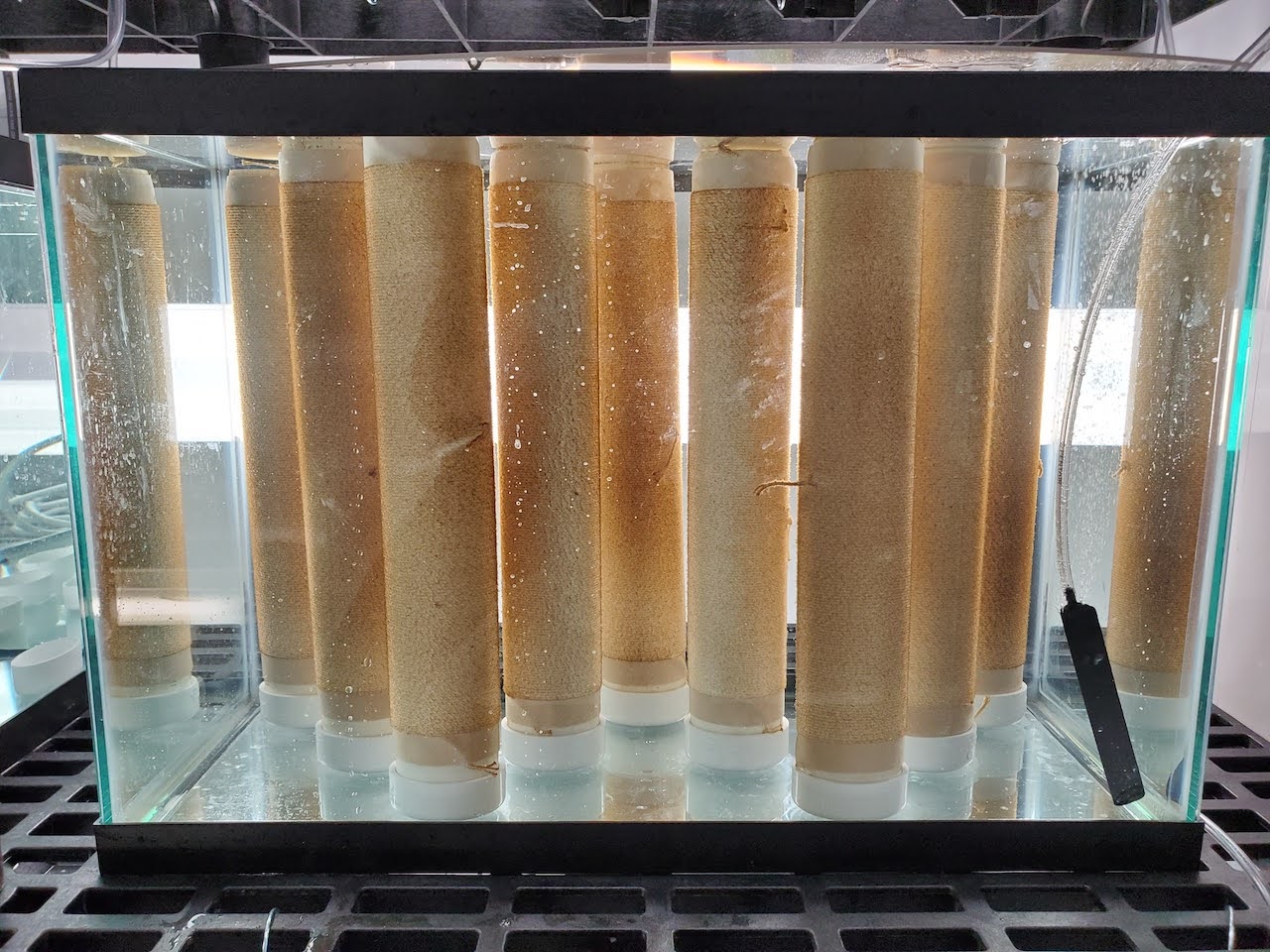When choosing a tank, remember that it will affect your choice of lighting setup. If you have glass or acrylic tanks, you will be able to light your tanks from the side. With tanks that are a solid color (such as fiberglass), you will need to light your tanks from the top. With non-translucent tanks, choose to have the tank be white, so light can refract across the tank.
Back to: Hatchery Equipment
Culture tanks for housing your spools can vary in number and size, ranging from 10-gallon to 200-gallon. The most commonly used tanks are glass fish tanks, which can be found at pet shops or sourced secondhand online from hobby aquarists. You can sometimes find cheap tanks at aquaculture centers getting rid of old equipment.
It’s also possible to purchase customized tanks built from glass, fiberglass, or acrylic at specialty aquaculture shops. This option tends to be more expensive, but the tailor-made fit for your space may increase the efficiency and ease of operation.
Traditionally, 20-gallon aquariums have been used to culture sugar kelp spools. This is mainly because they’re widely available, an easy-to-handle size, and able to fit a respectable number of spools (at least 12 2” spools, totaling 2,400 linear ft.) in each tank.
The exact size of the tank you want will depend on your production goals. If you want to just produce a few spools for yourself, a couple of 20-gallon tanks will do well. If you plan to have higher production, you may want larger tanks to save time and resources.
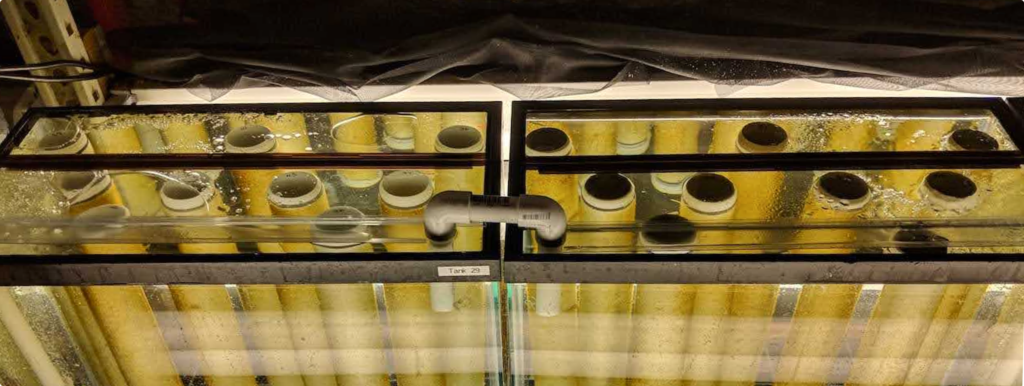
If possible, do not keep all your spools in one tank. If there is a catastrophic event that happens to that one tank (contamination, leaks, electrical malfunctions, human error, etc.), you might lose all your spools. We recommend having at least two tanks for a small operation and at least four tanks for larger operations, to reduce risk.
Finally, don’t forget tank lids! You can either purchase ones that are made for your tank or make acrylic covers to fit the top of your tank. You do not want anything else entering and compromising the growth of your kelp seed, and a tank lid will be an extra barrier against that.
Tank siphons
To cut down on costs, it’s possible to plumb your tanks in pairs—meaning two tanks share a single pump and a single chiller. In order to keep the water balanced between the two tanks, a siphon is needed. The siphon creates an equilibrium in water flow between multiple tanks.
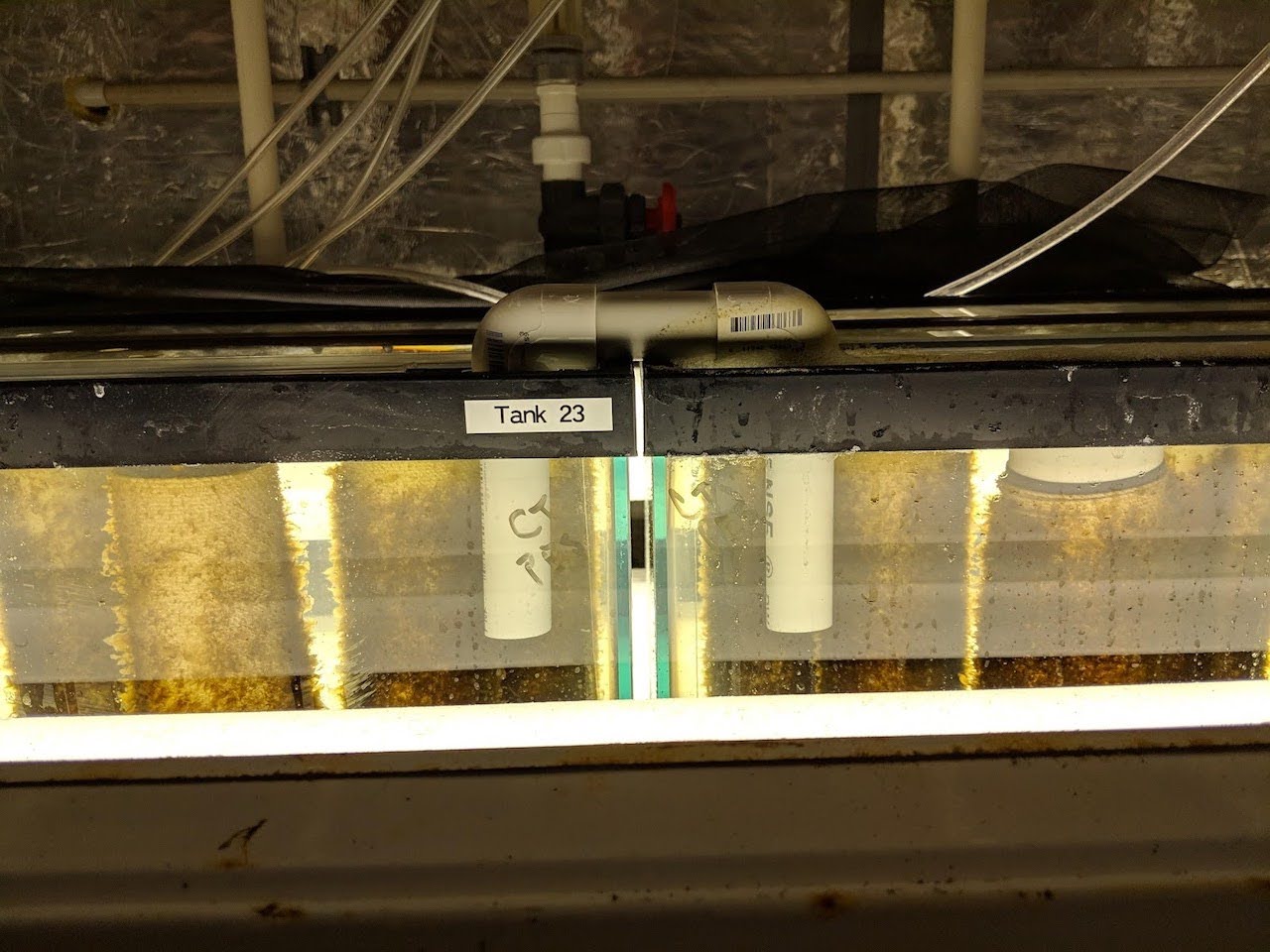
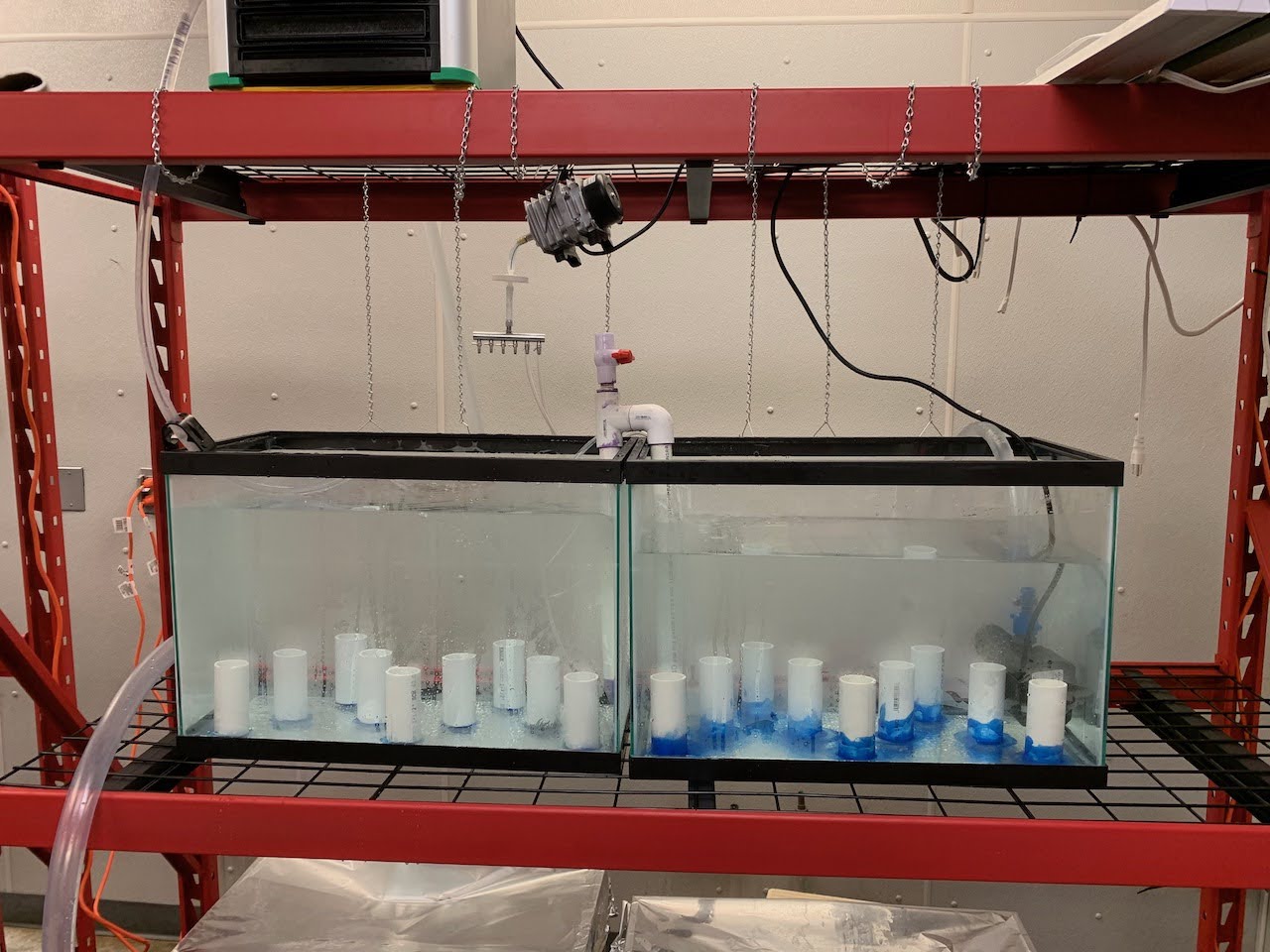
Spool stands
An optional piece of equipment that can be installed in your tanks are spool stands. With any movement in the water—either from aeration or flow from water circulation—the spools have the tendency to move around in the tank. Sometimes, they can tip over all together. Since kelp seed during the hatchery stage is very sensitive, any bumping of the spools can wipe off an entire section of blades and should be avoided if at all possible. A stand, or some kind of supportive structure, installed into the tank can help keep the spools in place and reduce this risk.
Arrange the spool stand in a way in which it uses the entirety of the bottom of your tank. Be sure to keep some space between each spool so it is easy to remove the spools without bumping them into one another.
GreenWave Tip
If you are lighting your tanks from the side, stagger your spools so that part of the spool gets light from both sides of the tank. If you light your tanks from above, be sure to have shallow enough tanks so that there is minimal change in light intensity from the top to the bottom of your tank.
